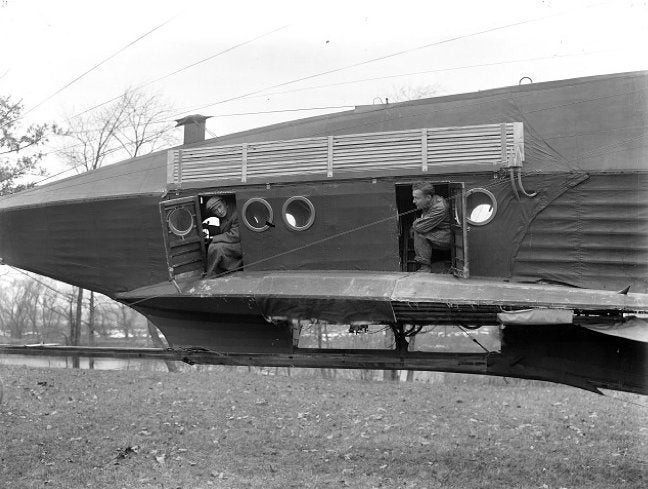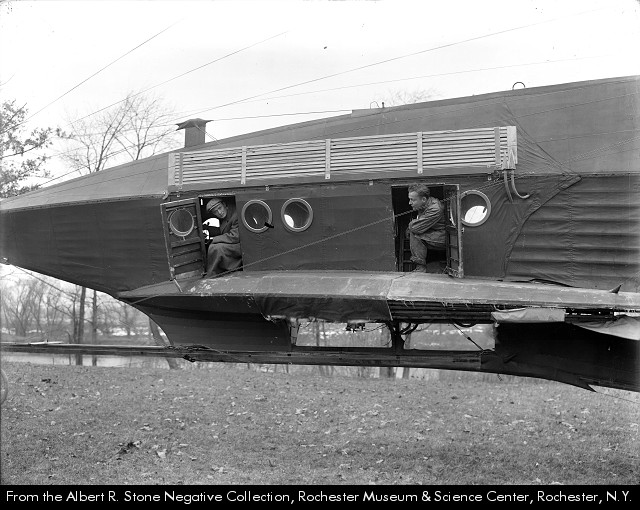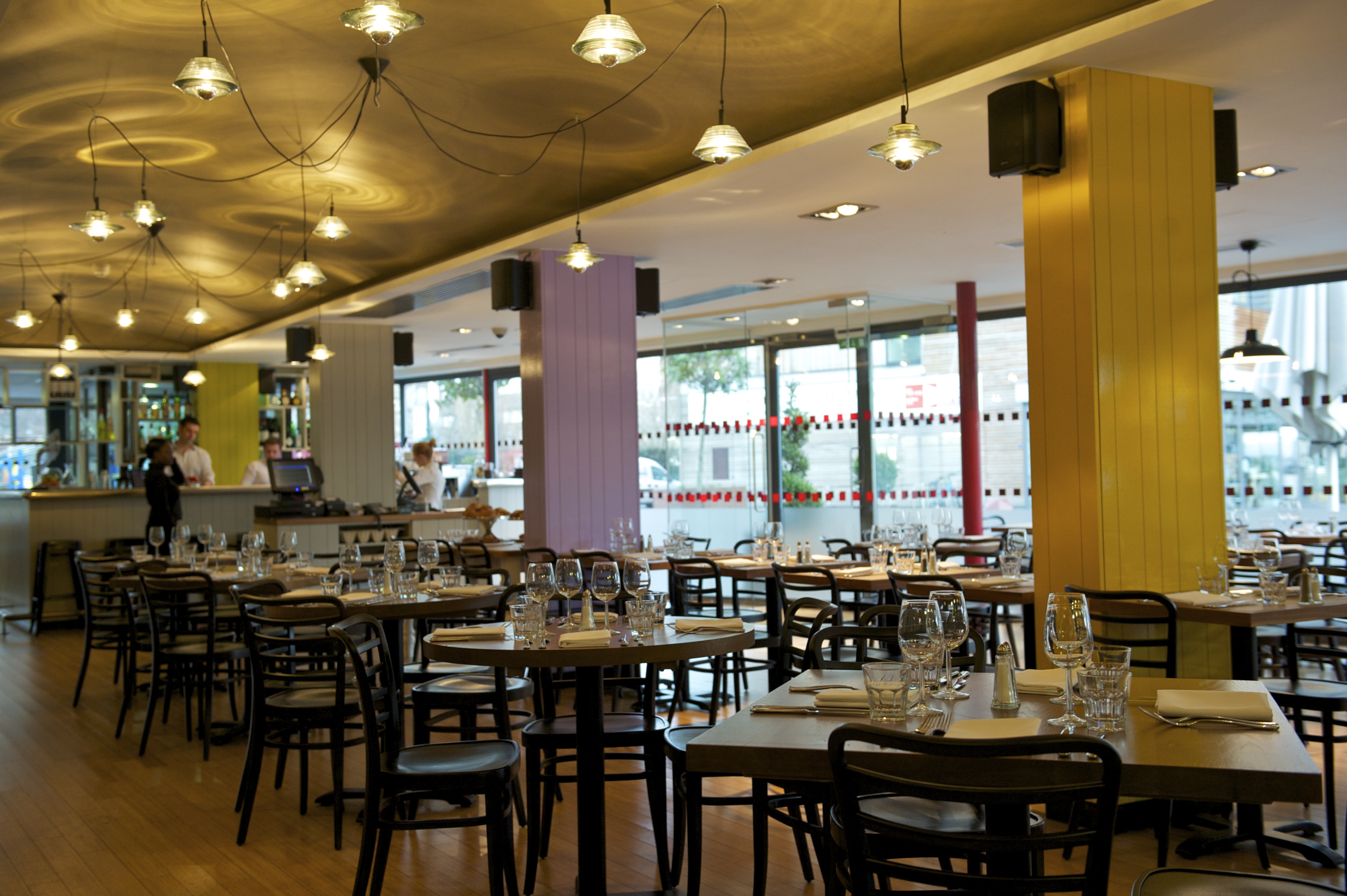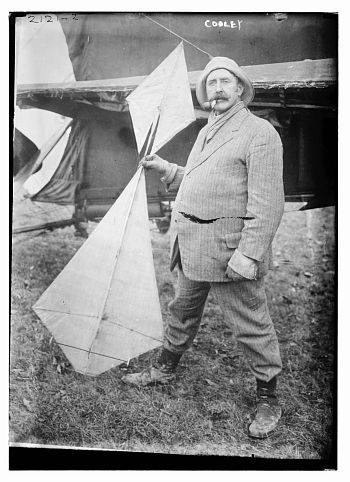
When John F. Cooley began building the Cooley Air Ship in 1910, he intended it to be the largest airplane ever flown, but that wasn't it's only 'first.' Cooley's aircraft looked like something from a Jules Verne novel (see photo below).

Made of spruce wood, cloth, and piano wire, its cabin was only two and a half feet wide making for an extremely narrow passenger compartment. At a time when most aircraft could fly no more than two people in an open cockpit, Cooley's Air Ship accommodated a pilot, a flight engineer, and two passengers.

Port hole-style windows, a ship's wheel, and a periscope used by the pilot added to a nautical feel. At 80 feet in length and weighing nearly 3,000 pounds, it's no wonder Cooley's Air Ship was nicknamed, "The Dreadnaught of the Skies."

Cooley was ahead of his time, of course, but it's hard to fault the man for dreaming big. The Cooley Aerial Navigation Company began life in New York City, but later moved construction operations to a tent on an upstate farm just outside Rochester.
At first Cooley hinted he was backed by a syndicate of wealthy New Yorkers. Later, he held fund raising dinners in a Rochester hotel to solicit additional investors. The highlight of each banquet came when Cooley flew a scaled down version of his Air Ship over the heads of his delighted audience.
Cooley's design called for an aircraft with two, six-cylinder, 90 hp engines that would drive his Air Ship 125 miles per hour, or twice the speed of conventional aircraft. He also outlined a flight control system that used pneumatics similar to modern day hydraulics. An on board tank of carbonated gas would supply the necessary pressure.
In December 1910, the Rochester Herald announced the Cooley Air Ship was nearing completion. Cooley had planned to demonstrate his aircraft's viability by flying it from Rochester to New York City, but at some point he changed his mind suggesting he'd cross the Atlantic instead.
With four wings, 42 feet in length, and a range of 300 to 500 miles, the canard-style aircraft boasted remarkable performance on paper. But until it actually flew, it was just a figment of Cooley's imagination. And to get it airborne would take money, lots of it.
Cooley (shown in front of his aircraft below) estimated the cost of building his Air Ship at $12,000. He'd already exceeded this amount when the Herald made its December announcement. In fact, Cooley had spent more than $20,000 without getting his plane off the ground. Rumors may have flown that winter, but Cooley's plane did not. Construction continued, but when spring 1911 came the inventor upped and disappeared.

At first he was reported to be in New York raising capital. When Cooley failed to return, however, investors assumed he'd absconded with their money.
Cooley's men stopped working on his aircraft since they were no longer being paid. Later, a local court issued a writ of attachment for an unpaid grocery bill. The total amount? $92. A lawyer involved in the case doubted anyone would buy Cooley's folly because "it may be worth...thirty cents, (or) it may be worth a million." Nobody knew for sure. Meanwhile, the Air Ship was left to rot on the banks of the Genesee River.
Many people feel Cooley was nothing more than a scam artist. But a closer examination of his case calls that charge into question. Over a 13 year period, including the time he spent working on his Air Ship, Cooley filed nearly 20 patents related to proprietary engine and aircraft improvements. In other words, there is no doubt Cooley was a serious inventor . If he was a conman, why go to all the trouble of securing patents? Click here to see a patent for one of Cooley's kites.
One explanation is that Cooley was sincere but misguided. After all, it was the early days of aviation; a time when many thought they could improve upon the art even if they were mistaken. When expenses surpassed income and his airplane was no closer to flight, Cooley may have felt overwhelmed, embarrassed, or both and taken flight himself. It wouldn't be the first time an inventor fell prey to his dreams.
Or he may have engineered the whole thing just to make money. We'll never know for sure. Still, Cooley's vision was enough to entice Rochester's elite to open their pocketbooks to the man who promised the thrill of flight. Though Cooley's motives remain a mystery one thing is for sure: even dreams have a price.